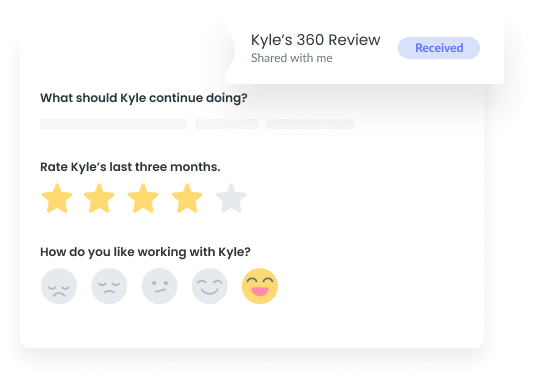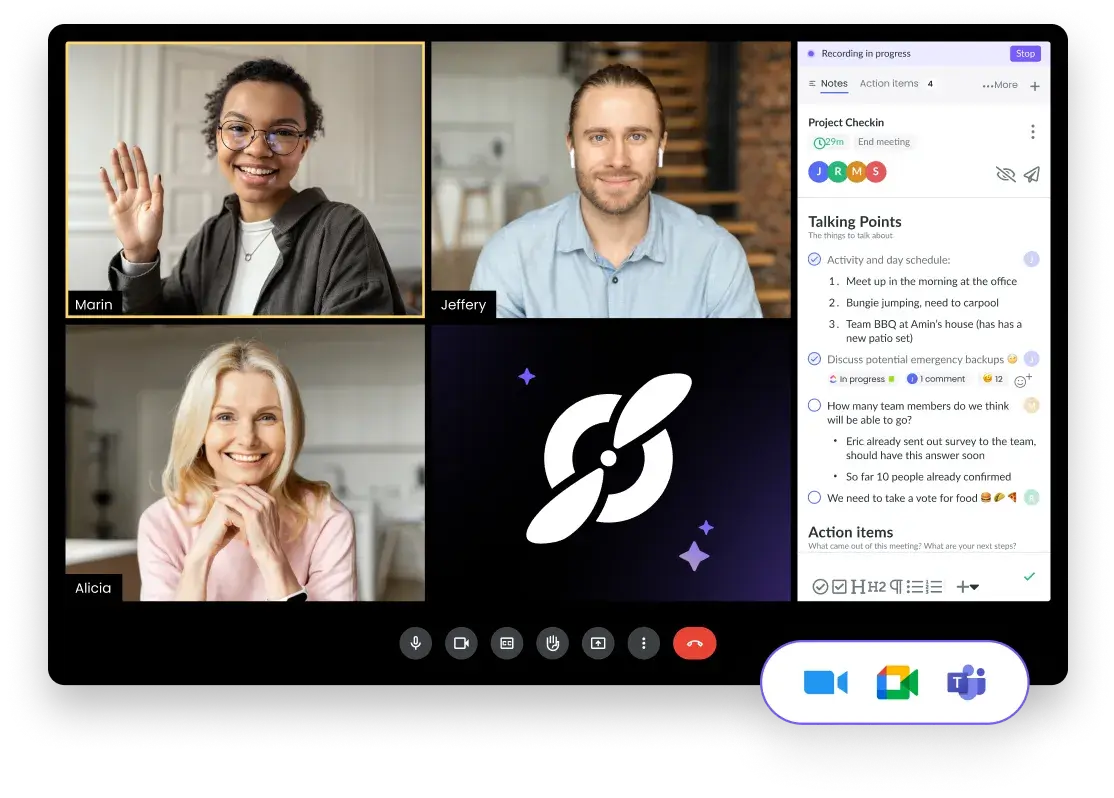Constructing a Creative Work Environment: 5 Benefits
Creativity in the workplace comes when you build a space where employees feel inspired. Learn the benefits of a creative work environment.
Innovation, engagement, employee productivity – these are just a few buzzwords you might think of when you think of the best office environments. But how exactly can you bring these exciting ideas into your office space? Well, often, a creative work environment is great for encouraging employees to innovate.
A creative work environment is simply a workspace with a company culture that celebrates creative thinking. It prioritizes engagement, brainstorming, and collaboration. All that said, not every organization will have the same approach to creative work environments, but these workspaces usually have a few things in common. Here, you’ll learn what those similarities are and how you can build an environment bursting with innovative ideas.
- Benefits of a creative work environment
- How to foster a creative work environment
- How to build a creative office environment
Benefits of a creative work environment
A creative work environment can lead to better engagement in the workplace and increased productivity. It can also do a lot for your team’s mental well-being. Here are some ways a creative work environment can benefit your team.
- Improves team camaraderie
- Increases employee engagement
- Improves problem-solving
- Boosts your team’s general outlook
- Leads to more enjoyable meetings
1Improves team camaraderie
When you’ve laid the foundation for collaboration and communication with an open and inspired workplace, people are more likely to get along. This is because everyone is familiar with one another and feels connected through shared work or mutual interests.

Construct a creative work environment
A well-run meeting can inspire creativity by encouraging communication and collaborating on a shared agenda. Try using a tool like Fellow!

2Increases employee engagement
A creative environment can increase engagement because people might feel inspired to share ideas or speak up during a meeting. When you prioritize creativity, you might see a noticeable shift in how connected team members feel to their work. They might take greater pride in their accomplishments and the work they produce.
3Improves problem-solving
A creative environment can lead to better problem-solving because team members are more likely to tackle obstacles from all angles. For instance, instead of limiting an answer to just A, B, or C, your team members can feel more comfortable taking risks. Maybe they’ll go with another less obvious option, like D (all of the above). With a creative environment already in place, people will feel more inclined to problem-solve from fresh perspectives.
4Boosts your team’s general outlook
A creative environment typically boosts team morale. Picture it: a fun, dynamic environment where team members bond through mutual interests or shared projects – that’s an office full of happy people. And a team with high morale is more likely to show up motivated and ready to tackle anything that comes their way.
5Leads to more enjoyable meetings
When your team is engaged, creativity fills the air, and this can make meetings more enjoyable. That’s because now you can ditch the boring meetings in favor of team members coming together to hash out ideas that can inspire results. You can go for a spontaneous approach with informal innovation sessions or alter the agenda to allow space for free-flowing ideas during your weekly check-ins.
How to foster a creative work environment
Creativity can be an elusive concept – even highly creative people can struggle to find it. But there are ways to jumpstart the creative process and get those juices flowing. Read on to find out how you, too, can maximize creative thinking on your team.
- Recognize your team members’ contributions
- Show interest in others’ interests
- Keep everyone engaged
- Encourage new ideas
- Make time for teachable moments
1Recognize your team members’ contributions
Any time a team member takes initiative or works extra hard on a project, you should acknowledge their efforts. You should celebrate wins, both big and small, and reframe failure as a path to success. This helps encourage creativity because it lets people know that their work matters. That’s especially important for creative thinkers who need that encouragement to think outside the box.
2Show interest in others’ interests
To promote creativity at work, find out what people’s hobbies or interests are and try to incorporate them into events at work. For example, if several team members enjoy baking, then have a team bake-off. The bakers will love the chance to flex their skills, and the judges can enjoy the tasty treats.
You should take a genuine interest in what interests others and find ways to bring those passions into the workplace. This way, people can get more excited about your company and its culture. Your team members might start feeling like a better fit for the organization and thus show up as their most authentic and enthusiastic selves.
3Keep everyone engaged
A creative work environment is buzzing with cross-functional collaboration. This is because the potential for innovative thinking expands when teams work together to accomplish goals. However, genuine collaboration only starts when people feel comfortable talking freely with one another.
So set an example with communication – organize brainstorming sessions and point people in the right direction when they need extra inspiration. You never know what someone can learn from their deskmate or the person down the hall working in accounting.
Try this free brainstorming session meeting agenda template:

4Encourage new ideas
To establish a creative work environment, you should encourage risks and applaud creativity and innovation. The next time someone shares a different approach to problem-solving during a meeting, hear them out and open the room to the discussion. Demonstrate that there’s no wrong way to innovate and that all creative thinking is welcome. If a team member feels too scared to take a risk, then they’re less likely to come forward with that groundbreaking idea.
5Make time for teachable moments
You can highlight the importance of learning and growing at work to increase your team’s creativity. A great way to bring these teachable moments into the fold is through peer feedback. When you work directly with a team member to overcome a project setback, you show them you want them to succeed. This does wonders for their creativity because they’ll feel more motivated to move forward knowing someone has their best interest at heart.
Of course, feedback can become a lot to keep track of, but the right tools can make all the difference. With Fellow, you and your team can track feedback. This way, everyone has a point of reference to return to when in need of a little guidance.

Phil Jacobson, VP of Product & Operations at #paid, has additional insight here. “Focus on building a feedback-first culture, where it’s normal and encouraged to regularly share constructive and positive feedback,” he says. “With this foundation, your team will feel comfortable voicing problems proactively.”
How to build a creative office environment
Now, you know the thinking and behaviors behind creativity in the workplace. You can expand on that with the below ways to build creativity into your physical space itself.
- Prioritize comfort
- Stay connected virtually
- Consider the best layout
- Go with an inspiring color
- Add personal design touches
1Prioritize comfort
For people to be excited about coming to work, they need to be comfortable there. This comfort relates to the space itself – comfy chairs and working spaces available beyond someone’s desk or office. But it also means letting people be themselves. So consider opting for a less rigid dress code that lets people feel comfortable in how they present themselves. When people can dress in their preferred style, it can boost their confidence and inspire them to participate more.
2Stay connected virtually
Your team can still stay connected when working from home or via a hybrid work model. But without a physical space, you’ll need team communication tools to stay in touch and keep everyone feeling creative. For example, on Slack, you can create a channel for sharing out-of-the-box ideas. You can also get together frequently on Zoom for brainstorming sessions.

3Consider the best layout
You’ve probably noticed that startups and industry-leading tech companies tend to favor an open floor plan with room to roam around. That layout can do a lot to inspire creative thinking – it’s open and less claustrophobic compared to the classic cubicle arrangement. Don’t be afraid to shake things up and expand your office’s boundaries.
4Go with an inspiring color
Maybe you want an accent wall in bright yellow because it’s linked to heightened creativity and imagination. When creating an inspiring office space, don’t feel limited to convention or the typical neutral color palette. Make the office a playful experience so people can gather inspiration from their surroundings.
5Add personal design touches
For an environment to inspire creativity, you should fill it with the things that inspire your team. Ask everyone what design elements they prefer or simply encourage them to bring in their decorations to liven up the space. They’ll feel more at home, and with comfort comes more creativity.
Get creative
A creative work environment can lead to increased innovation, better problem-solving skills, and a happier team. And a great way to maximize creativity through collaboration is to organize meetings with purpose. With Fellow, you can enjoy more productive and meaningful meetings. You can create collaborative agendas, keep your team accountable, and take notes all from one place. This way, you’ll never forget that brainstorming session where the team came up with its most creative ideas yet.












